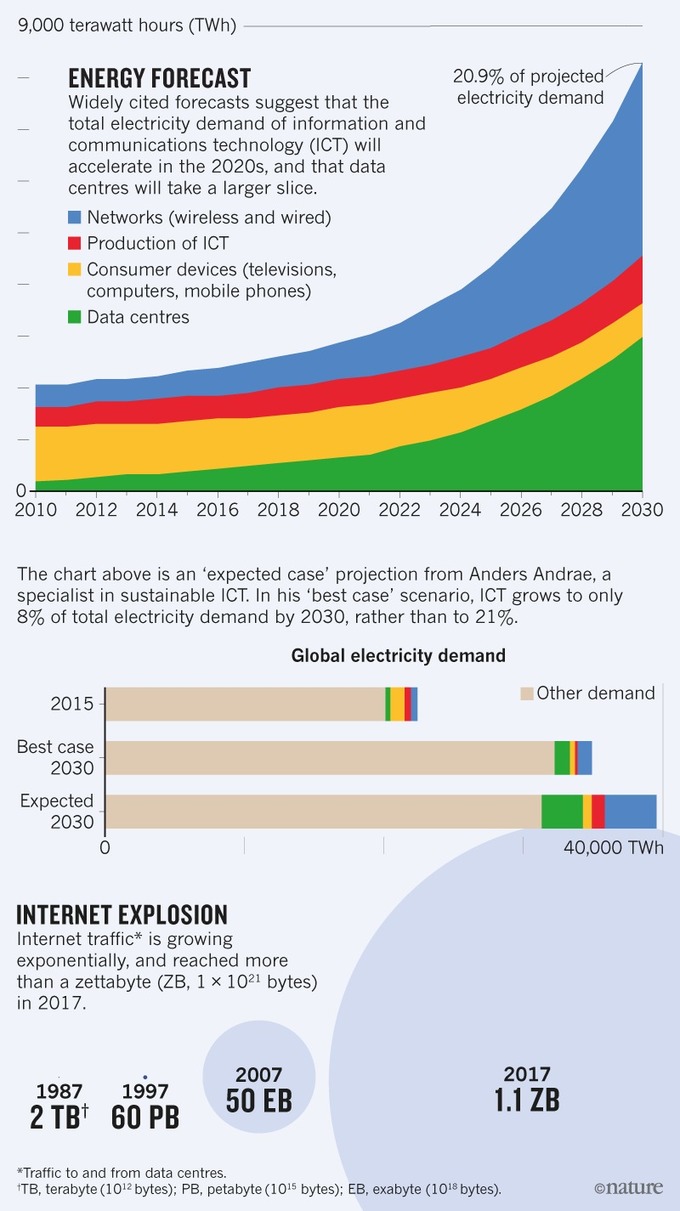Already, data centres use an estimated 200 terawatt hours (TWh) each year. That is more than the national energy consumption of some countries, including Iran, but half of the electricity used for transport worldwide, and just 1% of global electricity demand (see ‘Energy scale’). Data centres contribute around 0.3% to overall carbon emissions, whereas the information and communications technology (ICT) ecosystem as a whole — under a sweeping definition that encompasses personal digital devices, mobile-phone networks and televisions — accounts for more than 2% of global emissions. That puts ICT’s carbon footprint on a par with the aviation industry’s emissions from fuel. What could happen in the future is hard to forecast. But one of the most worrying models predicts that electricity use by ICT could exceed 20% of the global total by the time a child born today reaches her teens, with data centres using more than one-third of that (see ‘Energy forecast’)1. If the computationally intensive cryptocurrency Bitcoin continues to grow, a sharp rise in energy demand could come sooner rather than later (see ‘The Bitcoin bite’).
For now, despite rising demand for data, ICT’s electricity consumption is staying nearly flat, as increased Internet traffic and data loads are countered by increased efficiencies — including shuttering older facilities in favour of ultra-efficient centres such as Prineville’s. But those easy wins could end within a decade. “The trend is good right now, but it’s questionable what it’s going to look like in 5–10 years,” says Dale Sartor, who oversees the Center of Expertise for Energy Efficiency in Data Centers at the US Department of Energy’s Lawrence Berkeley National Laboratory in Berkeley, California.
Sourced through Scoop.it from: www.nature.com



Leave A Comment